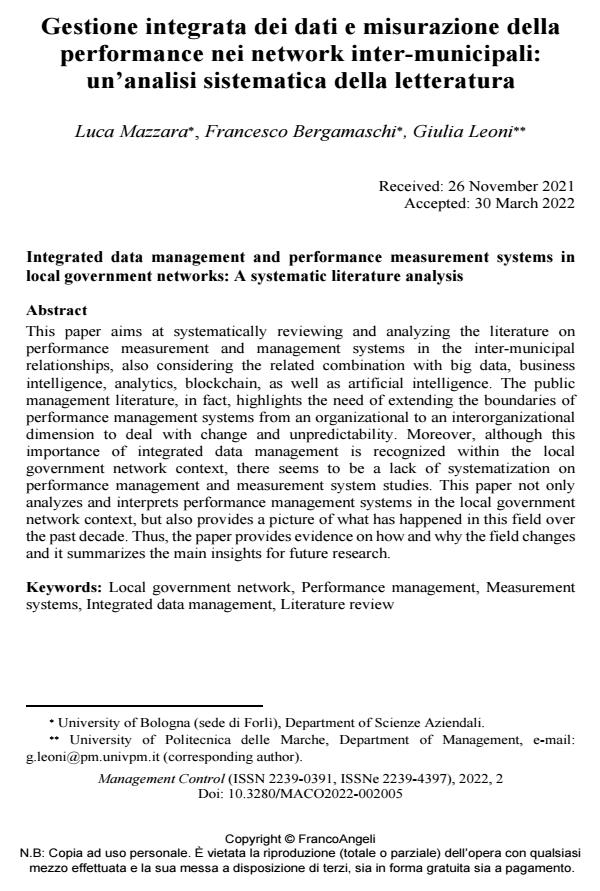Gestione integrata dei dati e misurazione della performance nei network inter-municipali: un’analisi sistematica della letteratura
Titolo Rivista MANAGEMENT CONTROL
Autori/Curatori Luca Mazzara, Francesco Bergamaschi, Giulia Leoni
Anno di pubblicazione 2022 Fascicolo 2022/2
Lingua Italiano Numero pagine 26 P. 91-116 Dimensione file 334 KB
DOI 10.3280/MACO2022-002005
Il DOI è il codice a barre della proprietà intellettuale: per saperne di più
clicca qui
Qui sotto puoi vedere in anteprima la prima pagina di questo articolo.
Se questo articolo ti interessa, lo puoi acquistare (e scaricare in formato pdf) seguendo le facili indicazioni per acquistare il download credit. Acquista Download Credits per scaricare questo Articolo in formato PDF

FrancoAngeli è membro della Publishers International Linking Association, Inc (PILA)associazione indipendente e non profit per facilitare (attraverso i servizi tecnologici implementati da CrossRef.org) l’accesso degli studiosi ai contenuti digitali nelle pubblicazioni professionali e scientifiche
This paper aims at systematically reviewing and analyzing the literature on performance measurement and management systems in the inter-municipal relationships, also considering the related combination with big data, business intelligence, analytics, blockchain, as well as artificial intelligence. The public management literature, in fact, highlights the need of extending the boundaries of performance management systems from an organizational to an interorganizational dimension to deal with change and unpredictability. Moreover, although this importance of integrated data management is recognized within the local government network context, there seems to be a lack of systematization on performance management and measurement system studies. This paper not only analyzes and interprets performance management systems in the local government network context, but also provides a picture of what has happened in this field over the past decade. Thus, the paper provides evidence on how and why the field changes and it summarizes the main insights for future research.
Parole chiave:Local government network, Performance management, Measurement systems, Integrated data management, Literature review
- Controllo di gestione e relazioni intraorganizzative: la prospettiva del controller Oppi Chiara, Vagnoni Emidia, Cattaneo Cristiana, Galizzi Giovanna, in MANAGEMENT CONTROL 3/2024 pp.155
DOI: 10.3280/MACO2024-003008
Luca Mazzara, Francesco Bergamaschi, Giulia Leoni, Gestione integrata dei dati e misurazione della performance nei network inter-municipali: un’analisi sistematica della letteratura in "MANAGEMENT CONTROL" 2/2022, pp 91-116, DOI: 10.3280/MACO2022-002005